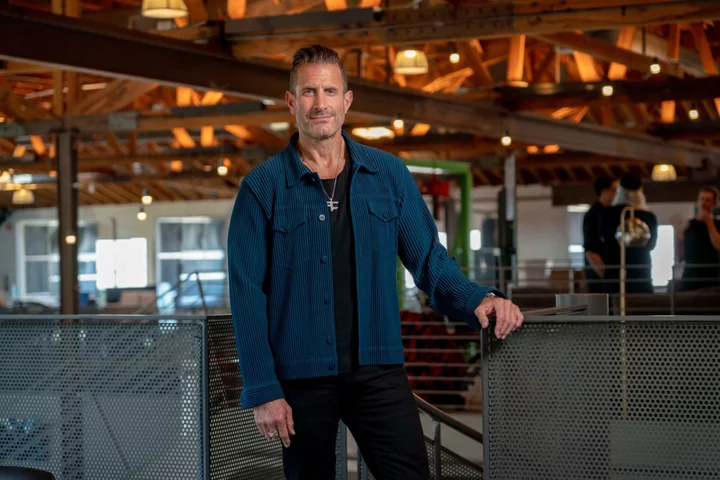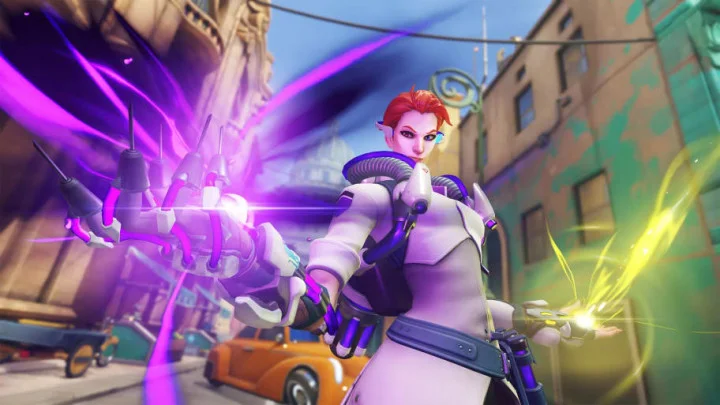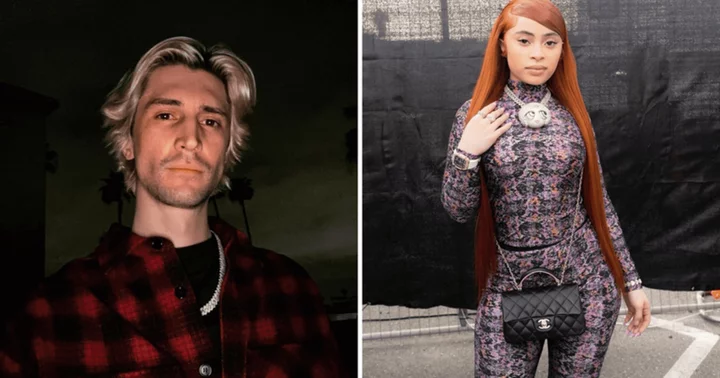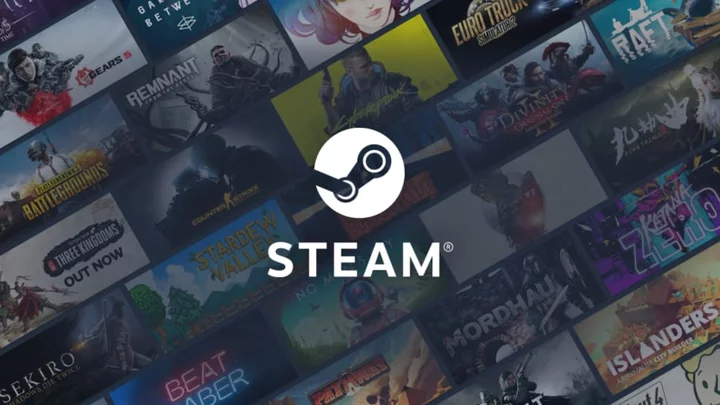Three months after its July 2022 debut on the Nasdaq, FaZe Holdings Inc. threw an exclusive party at a San Diego nightclub, hiring the rapper Travis Scott to promote its stable of video-game stars and YouTube personalities.
Social-media influencers mingled with gamers in expensive streetwear. Many looked bored as they filmed the event for their online channels. Well past midnight, Scott appeared for a 15-minute show, his voice barely audible over the thumping bass. The party, which cost $1.7 million, got the company and a sponsor’s name in hundreds of Google search results, YouTube videos and Instagram stories. Lee Trink, FaZe’s chief executive officer at the time, hailed the event as a great success.
“We achieved all of the things we would have hoped for, including making money,” he said in an interview after the party.
But with losses mounting and the shares tumbling, the company fired Trink, 55, on Sept. 9, replacing him on an interim basis with Chief Financial Officer Christoph Pachler. Interviews with seven former employees describe a mismanaged organization marked by poor spending decisions, excessive pay and expansion into unprofitable categories like esports. The company, which employed 112 people at year end, has been enmeshed in controversies involving its online personalities and announced two rounds of layoffs this year.
Los Angeles-based FaZe reported a $48.7 million loss from operations last year. After initially projecting that it would debut on the stock market with a $1 billion valuation, its shares have tumbled to 18 cents from over $20, reflecting skepticism that the social-media activities of young, largely male gamers could ever be a sustainable business — even if they have millions of fans. Last month in New York, followers of one influencer, not a FaZe Clan member, set off a riot in Union Square over a giveaway of game consoles.
Management, meanwhile, is evaluating its options, including a possible sale of the company, Trink said before he left.
“FaZe is definitely going to weather it,” he said in a June interview. “FaZe is no stranger to controversy. It’s part of why we’re so compelling.”
Trink couldn’t be reached for comment after his dismissal.
The FaZe Clan, as the group of gamers called themselves, was groundbreaking more than a decade ago when its teenage founders drew millions of followers to their YouTube channel to watch them play Call of Duty, Activision Blizzard Inc.’s first-person shooter game. FaZe’s creators pioneered the “trickshot” video, in which they vanquish opponents after jumping off a building or spinning around.
As their popularity grew, the founders brought more talent on board, and posted videos about their other interests, like skateboarding and pulling pranks. The strategy was simple: Millions of people will watch gamers they admire, and advertisers and sponsors will follow. The company now has a roster of 127 internet personalities, posting on sites that include Instagram and Twitch. But translating all those eyeballs into a profitable business has proved daunting — and still eludes the company despite its impressive 512 million social-media followers.
The so-called creator economy was in its infancy in 2014, when the energy drink G Fuel helped procure FaZe’s first “content house” in Plainview, New York. G Fuel paid the FaZe team $1,500 a month to feature its beverage in videos and covered the $6,000 rent on the property, where the players actually lived and uploaded their clips. G Fuel Chief Executive Officer Clifford Morgan came by every now and then, tidying up the place and taking out the empty pizza boxes.
Two years later, FaZe moved to Los Angeles, where YouTubers were flocking for a whiff of Hollywood glamour. The members posted videos about vaping conventions (27 million views), getting tattoos (9 million views) and pretending to get a woman pregnant (6.7 million views), in addition to playing Call of Duty.
In 2017, the company brought on Greg Selkoe as “PreZident.” The founder of online clothing retailer Karmaloop, Selkoe viewed FaZe as “a new iteration of youth culture, just like skateboarding and hip hop.” FaZe had “almost no revenue” when he joined, Selkoe said in an interview. The company confirmed that.
Trink joined FaZe as CEO the next year. A former child actor and Brooklyn prosecutor, he had been advising the company since 2016 and had also done stints as an executive with Virgin Records and EMI Capitol Music. Trink loved the stage, but had no experience in gaming, esports or the creator economy.
Over time, the two developed a more centralized organization that generated revenue in several ways. FaZe sold sponsorships to brands, whose products were featured in videos made by the FaZe personalities. The company also earned money from ads that ran alongside the YouTube videos. FaZe then dove into another, more tumultuous wave: esports.
Epic Games’ blockbuster first-person shooter Fortnite, released in 2017, rocketed FaZe into the mainstream. The company’s Call of Duty pros easily parlayed their skills into the cartoony kids’ shooter, which boasted 78.3 million monthly players by late 2018. The New York Times ran a feature on FaZe, later to be followed by a Sports Illustrated cover.
As the idea that the public would watch groups of professionals play in video-game tournaments took off, FaZe began investing more in its esports lineup, which has since grown to include 54 players across 14 teams. The esports industry has experienced a broad decline since 2018, however. Investors and sponsors have soured on the idea that competitive gaming could rival traditional sports. Most of the FaZe teams have been unprofitable, according to a video posted earlier this year by Nordan “FaZe Rain” Shat, a company co-founder. FaZe doesn’t break out specific esports expenses, but said its revenue in that business has continued to climb and that its esports presence helps sell broader sponsorship packages.
Management disputes arose. Selkoe and other FaZe executives left in 2020 to found XSET, an esports company based in Boston.
“We didn’t leave on good terms,” Selkoe said, adding he wasn’t “a huge fan of” Trink’s management style. Selkoe took issue with FaZe’s almost all-male roster of gamers and has made diversity a core part of his new company’s image. FaZe paid Selkoe $3.2 million to settle a lawsuit over his departure, according to a public filing.
Trink also focused on making FaZe a lifestyle brand, in the process elevating himself into a thought leader in the creator economy, once comparing FaZe’s trajectory to that of Apple Inc. under Steve Jobs. FaZe’s collaboration with Japanese artist Takashi Murakami in 2020 brought in over $1.2 million in less than four hours from sales of limited edition jerseys and mousepads.
Looking beyond video games, the company secured sponsorship deals with blue chip companies including General Mills Inc. and McDonald’s Corp. Revenue jumped 42% to $52.8 million in 2021 and peaked at $70 million last year.
But even as sales grew, so did expenses. FaZe rented a series of luxury properties that served as homes and filming locations for its media stars. The costs, including rent, utilities and security, ran to as much as $60,000 a month. Among the properties was a lakefront mansion in suburban Los Angeles, now estimated to be worth $12 million, that FaZe members said was previously home to singer Justin Bieber. Trink took FaZe’s influencers to fancy Los Angeles steakhouses and wore a diamond-encrusted necklace featuring FaZe’s “F” logo.
“We weren’t throwing money in the garbage,” Trink said. “We were creating a mythology.”
In June 2020, one of the company’s stars, Nick “Nickmercs” Kolcheff, signed a three-year contract worth $500,000 annually, according to a document reviewed by Bloomberg. He also got options on 105,000 shares. The company said it doesn’t discuss individual deals with talent. Gabriel del Rio, a representative for Kolcheff, said the gamer has generated $2.5 million in merchandise sales and 250 million viewing hours on Twitch since first joining FaZe in 2019.
In March of last year, the company announced that rapper Calvin “Snoop Dogg” Broadus Jr. would join its board. As part of an agreement that required him to post FaZe content on his social-media channels, Broadus and companies tied to his wife, son and manager received $2.6 million in restricted stock, payable over time, according to a copy of his contract.
Trink earned $731,000 in salary and bonus in 2022, down from $1.38 million the year before, according to public filings. With his own money, FaZe’s CEO rented a Malibu beach house where he sometimes held meetings. His rock-star persona extended to the office, where he worked on an elevated platform in the center of a former Hollywood warehouse. The executive brought his pit bull to work, where it bit at least one staffer, Trink acknowledged. FaZe’s overall lease expenses jumped 71% to $1.54 million in 2022, according to a company filing.
FaZe’s early financing included $40 million from rapper Pitbull, actor Chris O’Donnell and a roster of media and sports personalities, according to an April 2020 press release. Then Trink made a decision that four former employees said contributed enormously to the company’s current financial woes — he borrowed more money. By the end of 2021, debt had more than doubled to $70.8 million, including a $55 million convertible note paying 10% a year and maturing at the end of 2023, according to public filings.
Trink began speaking internally about taking FaZe public in 2021 through a special purpose acquisition company, a shell used to bring closely held companies to market quickly.
Meanwhile, FaZe was weathering its biggest controversy yet. Members had previously been embroiled in public flare-ups. One of its Fortnite players was suspended for using a racial slur during a live stream. He later apologized. FaZe’s Call of Duty team also had to apologize for a sexist joke about women esports pros. FaZe member Richard “Banks” Bengston was criticized online for promoting an offshore gambling site not legal in the US. Bengston, who told a podcaster that his involvement was “ 100% legit” because he played in Mexico, didn’t respond to requests for comment.
But fallout from those episodes paled in comparison with the turmoil that followed FaZe’s involvement with an English YouTuber named Sam Pepper, who had become famous on the reality television show Big Brother. In 2014, the BBC reported that six women had accused Pepper of harassment. One of them was identified by name. In an email response to questions from Bloomberg, Pepper said none of the allegations were true. “No legal actions, no arrests, no court cases,’’ he said.
In 2021, Pepper began working as an independent contractor at FaZe, consulting on YouTube channel strategy with some of the founders, according to the company. At one point, Pepper was on the phone with Apple, trying to broker brand deals, according to two former employees. Pepper declined to comment on his role, citing an agreement not discuss it.
Pepper helped FaZe members promote a cryptocurrency token called Save the Kids, ostensibly for charity. The coin’s value crashed, however. A YouTube sleuth later revealed that the influencers had sold their holdings for thousands of dollars in profit before the collapse. FaZe ended its relationship with one influencer and suspended three others, saying in a statement at the time that it had no connection to the promotion. Pepper, who is no longer involved with FaZe, said he was paid by a FaZe member to help with his videos and was “dragged in to all the drama and later thrown under bus.” He added, “Many people came out and proved his statements about me being involved [were] not true.”
After the incident, FaZe had a harder time attracting sponsors, according to one person with knowledge of the company’s sales who asked to not be identified discussing internal matters. FaZe confirmed it did have a harder time, but despite the controversy it was able to sign deals with companies like Porsche AG and Nike Inc.
“We did a pretty thorough investigation,” Trink said. “It was a lesson that the talent cannot be totally unfettered.”
In October 2021, FaZe said it would go public by combining with B. Riley Principal 150 Merger Corp., a SPAC. Investors and fans pored over public filings after the merger was announced, looking for more details about the company. In an investor presentation that month, FaZe projected that its revenue would grow to $651 million by 2025. Another filing revealed that one content creator accounted for 22% of the company’s revenue in 2021.
“It was not a company that really should be sharing what’s going on publicly at this point,” said Selkoe, FaZe’s former president, suggesting that the business wasn’t mature enough to stand up to the scrutiny of public markets.
The timing of the merger wasn’t great, as many investors had already begun to sour on SPAC deals. After some of the initial investors walked away from the offering, B. Riley stepped up to support the deal, according to a regulatory filing. “Many SPAC transactions in the time period when FaZe went public experienced significant redemptions from investors who were concerned about equity market trend,” the company said in a statement.
FaZe became a publicly traded company on July 19, 2022, paying off its debt and receiving $57.8 million in net proceeds, less than originally anticipated. B. Riley Financial Inc. remains the company’s largest stockholder, with a 14% stake worth about $2 million. B. Riley Chief Investment Officer Dan Shribman served as chairman of FaZe until he stepped down in late August. FaZe said it wasn’t due to a disagreement. Shribman didn’t respond to a request for comment.
On July 20 of last year, Trink took the podium at the Nasdaq in New York to celebrate FaZe’s debut.
“Can we get everybody up here? It’s definitely not all about me,” he said, beckoning FaZe members on stage.
Trink thanked the “renegade teenagers” who founded FaZe and the executives in LA and around the world who “stood on the shoulders of these giants.” As he rang the opening bell, red confetti poured down. The FaZe “F” lit up in Times Square.
On YouTube, meanwhile, viewers bemoaned FaZe’s change from its roots as a scrappy kids’ brand.
“Bro to be honest. I don’t give a ‘f’ if Faze is Public Company,” one fan said. “I miss when it was 6 friends in a average NY house making funny pranks, skits, vlogs, and challenges every day.”
After initially supporting the deal in an online interview last year, Bengston, the company co-founder, this year railed against the “corporate” types who “stole” the brand. “You have no idea what FaZe is,” he wrote in April on X, formerly known as Twitter.
Few of FaZe’s original members regularly post their gameplay online anymore — something former employees said undermines the company’s initial model. Snoop Dogg left FaZe’s board in March, with the company saying it wasn’t the result of any disagreement between the two. G Fuel has been replaced by another energy drink sponsor.
The advertising market overall began shrinking last year, sending the sponsor-reliant esports and influencer industries spiraling. In the first half of 2023, FaZe posted a loss of $28 million. Sales tumbled 30% to $24.2 million.
Before his firing, Trink said FaZe was “reinvigorating its roster” of online stars and reducing expenses. In February, the company cut 20% of its staff, followed by a 40% cut two months later. While FaZe hasn’t shared news of any major new sponsors since deals with Porsche and Nike were announced in January, brands like McDonald’s and General Mills remain.
“This business ebbs and flows,” Trink said, citing the broader downturn in advertising. “We’re not there yet as an industry, but we’re getting there.”









